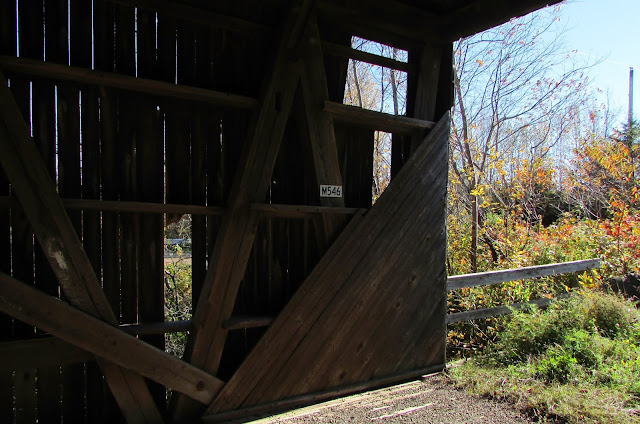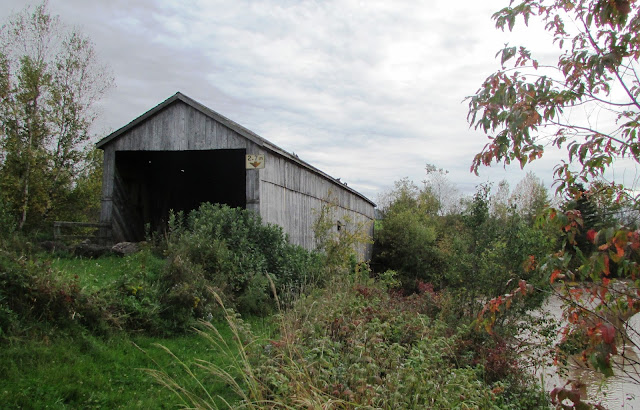There are two covered bridges in St. Martins, the only place in the province that still has bridges so close to one another. They cross the Irish River as is empties into the harbor on the Bay of Fundy, and they are sometimes put in peril during storms when there are very high tides. It looks like they will need to be raised soon, or become almost certain victims to the higher water levels associated with climate change. I've added a photograph below that I took from the Village of St. Martins Facebook page from October 29th, 2015. I don't know who to credit it to - sorry.
***
March 27th, 2016 - Our first ever 'off-season' visit to St. Martins, on Easter Sunday. It was a gorgeous day and there were lots of other people out for a drive as well. I noticed that there is a dam-like structure just upstream from this bridge, but can't find anything about it on any related websites. I assume it is for flood control, or to block large ice chunks or trees from coming down and wrecking the bridge?












































